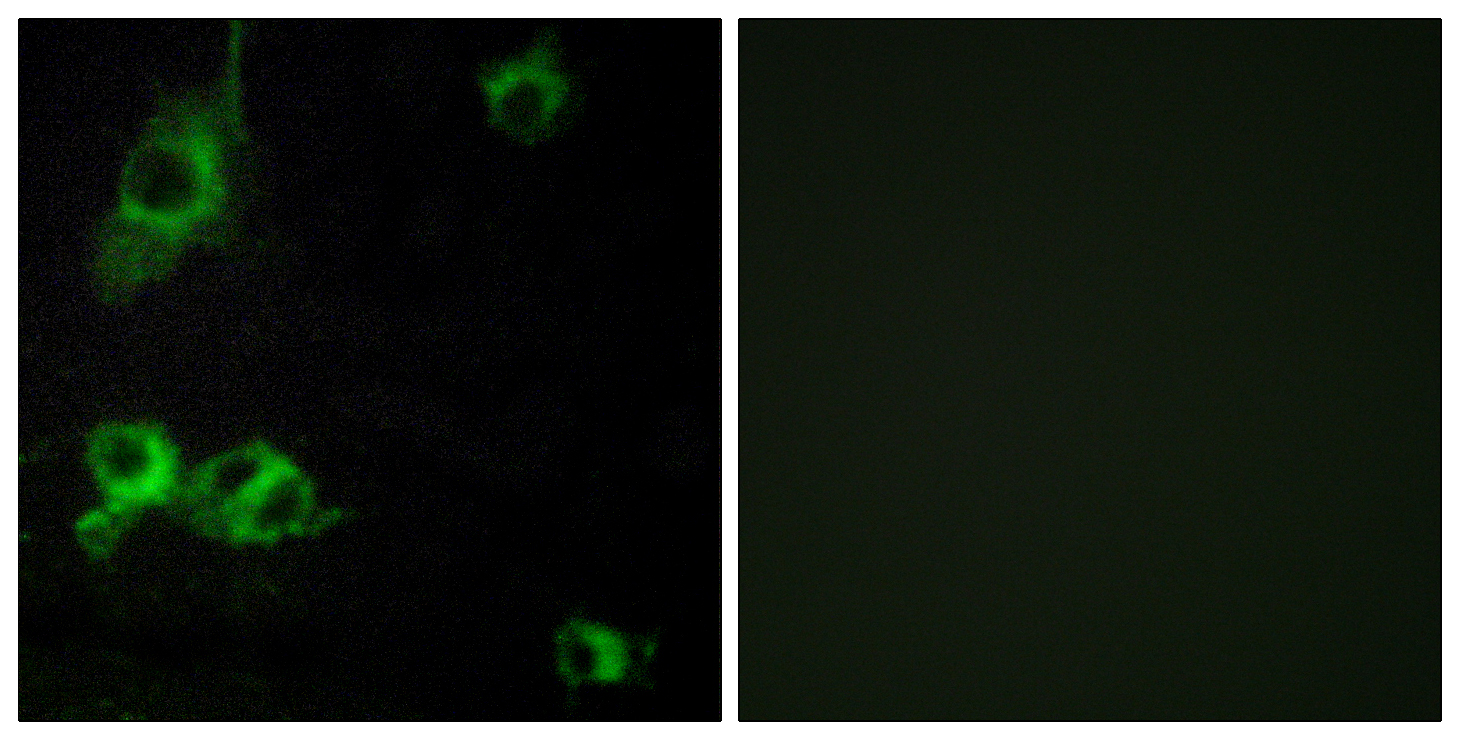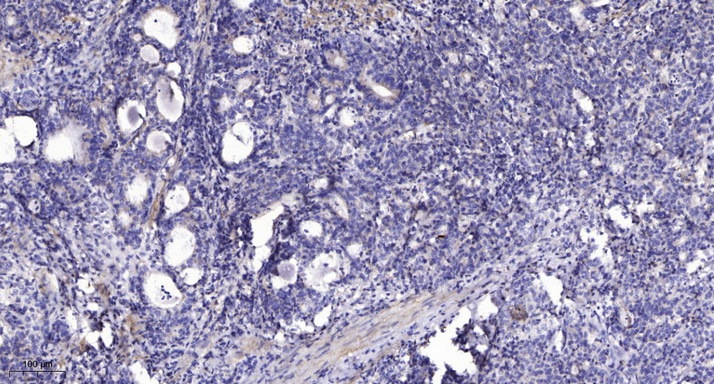Laminin α-1 Polyclonal Antibody
- Catalog No.:YT2523
- Applications:WB;ELISA;IHC
- Reactivity:Human;Mouse
- Target:
- Laminin α-1
- Fields:
- >>PI3K-Akt signaling pathway;>>Focal adhesion;>>ECM-receptor interaction;>>Toxoplasmosis;>>Amoebiasis;>>Human papillomavirus infection;>>Pathways in cancer;>>Small cell lung cancer;>>Hypertrophic cardiomyopathy;>>Arrhythmogenic right ventricular cardiomyopathy;>>Dilated cardiomyopathy;>>Viral myocarditis
- Gene Name:
- LAMA1
- Protein Name:
- Laminin subunit alpha-1
- Human Gene Id:
- 284217
- Human Swiss Prot No:
- P25391
- Mouse Swiss Prot No:
- P19137
- Immunogen:
- The antiserum was produced against synthesized peptide derived from human LAMA1. AA range:2501-2550
- Specificity:
- Laminin α-1 Polyclonal Antibody detects endogenous levels of Laminin α-1 protein.
- Formulation:
- Liquid in PBS containing 50% glycerol, 0.5% BSA and 0.02% sodium azide.
- Source:
- Polyclonal, Rabbit,IgG
- Dilution:
- WB 1:500-2000;IHC 1:50-300; ELISA 2000-20000
- Purification:
- The antibody was affinity-purified from rabbit antiserum by affinity-chromatography using epitope-specific immunogen.
- Concentration:
- 1 mg/ml
- Storage Stability:
- -15°C to -25°C/1 year(Do not lower than -25°C)
- Other Name:
- LAMA1;LAMA;Laminin subunit alpha-1;Laminin A chain;Laminin-1 subunit alpha;Laminin-3 subunit alpha;S-laminin subunit alpha;S-LAM alpha
- Molecular Weight(Da):
- 337kD
- Background:
- This gene encodes one of the alpha 1 subunits of laminin. The laminins are a family of extracellular matrix glycoproteins that have a heterotrimeric structure consisting of an alpha, beta and gamma chain. These proteins make up a major component of the basement membrane and have been implicated in a wide variety of biological processes including cell adhesion, differentiation, migration, signaling, neurite outgrowth and metastasis. Mutations in this gene may be associated with Poretti-Boltshauser syndrome. [provided by RefSeq, Sep 2014],
- Function:
- domain:Domains VI, IV and G are globular.,domain:The alpha-helical domains I and II are thought to interact with other laminin chains to form a coiled coil structure.,function:Binding to cells via a high affinity receptor, laminin is thought to mediate the attachment, migration and organization of cells into tissues during embryonic development by interacting with other extracellular matrix components.,similarity:Contains 1 laminin N-terminal domain.,similarity:Contains 17 laminin EGF-like domains.,similarity:Contains 2 laminin IV type A domains.,similarity:Contains 5 laminin G-like domains.,subcellular location:Major component.,subunit:Laminin is a complex glycoprotein, consisting of three different polypeptide chains (alpha, beta, gamma), which are bound to each other by disulfide bonds into a cross-shaped molecule comprising one long and three short arms with globules at each end. Alp
- Subcellular Location:
- Secreted, extracellular space, extracellular matrix, basement membrane. Major component.
- Expression:
- Liver,Placenta,Skin,
- June 19-2018
- WESTERN IMMUNOBLOTTING PROTOCOL
- June 19-2018
- IMMUNOHISTOCHEMISTRY-PARAFFIN PROTOCOL
- June 19-2018
- IMMUNOFLUORESCENCE PROTOCOL
- September 08-2020
- FLOW-CYTOMEYRT-PROTOCOL
- May 20-2022
- Cell-Based ELISA│解您多样本WB检测之困扰
- July 13-2018
- CELL-BASED-ELISA-PROTOCOL-FOR-ACETYL-PROTEIN
- July 13-2018
- CELL-BASED-ELISA-PROTOCOL-FOR-PHOSPHO-PROTEIN
- July 13-2018
- Antibody-FAQs
- Products Images

- Immunofluorescence analysis of COS7 cells, using LAMA1 Antibody. The picture on the right is blocked with the synthesized peptide.

- Western blot analysis of the lysates from HUVECcells using PARK7 antibody.

- Immunohistochemical analysis of paraffin-embedded human Gastric adenocarcinoma. 1, Antibody was diluted at 1:200(4° overnight). 2, Tris-EDTA,pH9.0 was used for antigen retrieval. 3,Secondary antibody was diluted at 1:200(room temperature, 45min).



